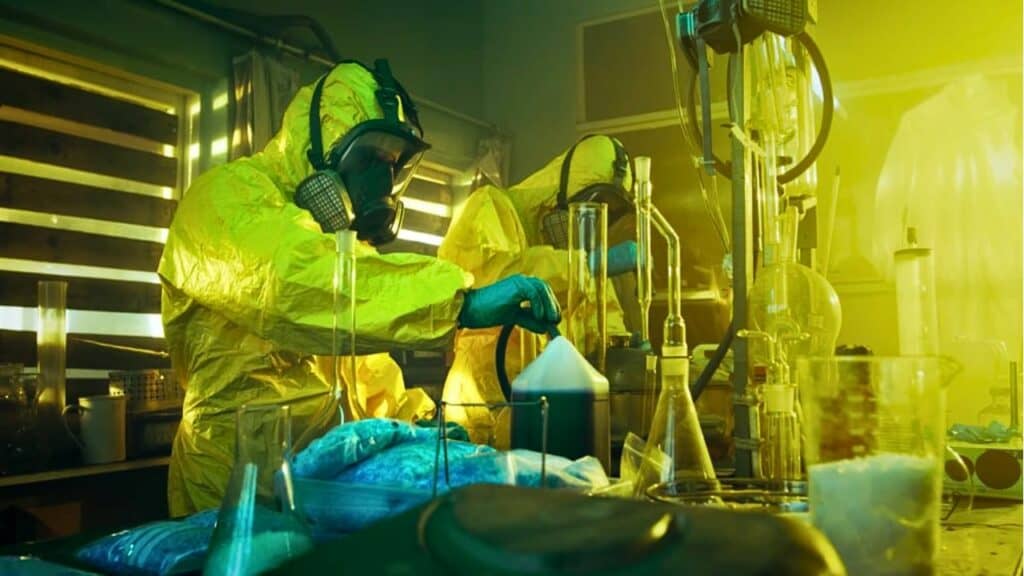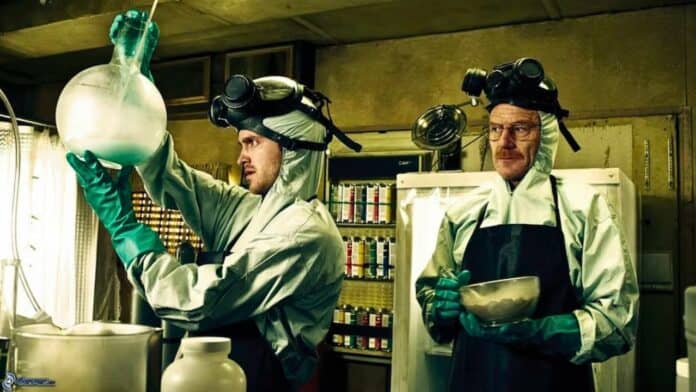Breaking Bad is a crime-drama series revolving around Walter White, a high school chemistry teacher who devolves into a powerful drug lord.
Breaking Bad, the critically acclaimed television series is renowned for its gripping storyline centered around chemistry teacher-turned-methamphetamine manufacturer Walter White.
This article examines the accuracy of the chemical processes depicted in Breaking Bad, separating the hard facts from the dramatic fiction.
The Realism of Chemical Procedures
Breaking Bad has been lauded for its relatively realistic portrayal of chemical processes.
The show’s producers made a concerted effort to consult with experts in the field to ensure that the depiction of methamphetamine production, as well as other chemical processes, was as accurate as possible within the bounds of television storytelling.
However, certain details were intentionally altered or simplified to prevent the show from being a how-to guide for illegal drug manufacturing.

Chemistry as a Storytelling Tool
The series uses chemistry not just as a backdrop but as a pivotal storytelling tool.
Walter White’s expertise in chemistry is central to his character’s development and the progression of the plot.
While the show takes some creative liberties, the general principles and processes of chemistry are used effectively to drive the narrative and develop characters.
Balancing Accuracy with Entertainment
While Breaking Bad aims for realism in its portrayal of chemistry, the show’s primary goal is entertainment.
As such, certain scenes and chemical processes are dramatized for effect.
For instance, the iconic blue methamphetamine produced by Walter White, while chemically plausible, is unlikely to be as pure and visually striking in reality.
The show balances scientific accuracy with the need to keep the storyline engaging and visually appealing.
The Portrayal of Laboratory Practices
The laboratory practices shown in Breaking Bad are a mix of fact and fiction.
The equipment and techniques used are largely realistic and reflective of actual chemical practices.
However, some procedures are exaggerated or inaccurately portrayed for dramatic purposes.
Additionally, the show often downplays the safety precautions that would be essential in a real chemistry lab.
Chemical Knowledge and Character Development
Throughout Breaking Bad, Walter White’s deep understanding of chemistry is a key aspect of his character.
The show accurately portrays the complexity of chemical knowledge and its application in various scenarios.
This aspect not only adds depth to Walter’s character but also demonstrates how scientific expertise can be wielded in both positive and negative ways.
Conclusion
Breaking Bad offers a compelling portrayal of chemical processes, balancing scientific realism with the necessities of dramatic storytelling.
While the show takes certain liberties for the sake of entertainment, it largely respects the principles of chemistry, using them to enrich the narrative and characters.
The series stands as a testament to the power of science in storytelling, captivating audiences with its blend of factual chemistry and fictional drama.
Also Read: Mythic Quest characters and their insights into the psychology of gaming

